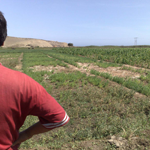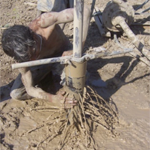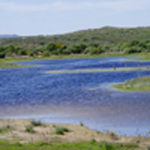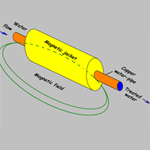All over the world a wide variety of clever solutions are implemented to overcome salinity problems. We are happy to share this salty solutions overview with you and invite you to send in your solutions to info@thewaterchannel.tv.
| Big solutions | |
 | Drainage What: All irrigation water (except rainwater) contains salt. Therefore, salinization of irrigated land is inevitable, unless it is served by a drainage system that flushes excessive water (and the salt within) away from the field. Learn more by downloading the book “Drain for Gain: Making Water Management Worth its Salt” More info on www.WaterLog.info and Biodranage: An Eco-Friendy Technique for Combating Waterlogging and Salinity (ICBA) |
 | Aquaculture and agriculture in saline areas, Dutch experiences What: It is possible to breed varieties of common crops to grow in saline enviroments. Saline aquaculture refers to the cultivation of plants or animals in saline water. In the Netherlands several initiatives are carried out to explore the feasibility of this type of aquaculture which can become valuable as soils are going down (due to drainage) and the sea level is rising (due to climate change). Learn more by: watching the videos on the activities at the proefboerderij in Zeeland: “Aquaculture with a dash of salt” and the zilt proefbedrijf in Texel: “salt resistant crops“. More info on: www.zeeuwsetong.nl and www.ziltproefbedrijf.nl |
 | Desalination What: getting fresh water out of saline water using a variety of techniques, e.g. membranes, that remove salts and other minerals. Learn more by: watching the video series on the Adalaide Deslination Plant, reading this overview article of Mohamad Amin Saad (2005) Membrane Desalination for the Arab World: Overview and Outlook (article in Arab Water World). More info on: How Stuff Works: Desalination; Latest news on Desalination |
| Promising solutions | |
 | The Bhungroo straw What: The Bhungroo straw is a simple technique to inject filtered storm water in to the ground. It is currently used in India, but has the potential to be implemented in other parts of the world as well. Learn more by: watching The Bhungroo straw or by downloading this presentation More info: questions can be asked by email to Biplab Paul |
 | Infiltration ponds as buffer What: Infiltration ponds can be constructed into dunes to enhance natural recharge of precipitation to groundwater serving as a barrier to saline groundwater intrusion. The ponds can be excavated or formed through enclosure dikes. These ponds are already used in Atlantis, South Africa. Learn more by: Downloading the book “Managing the Water Buffer for Development and Climate Adaptation” or visit the website www.bebuffered.com. More info: info@bebuffered.com |
 | Community-based environmental monitoring What: Setting up a monitoring system on salinity intrusion in the Mekong Delta in Vietnam Learn more by: downloading this poster More info: USGS, Cantho university |
 | Treating Saline Water by magnetic Device What: Passing water through a strong magnet reduces the attachment of water to saline particles for 8-10 hours. This works with water with salinity up to 2000 parts per million. Learn more by: Watching the Video Treating Saline Water by Magnetic Device More info: Magnetic Treatment of Irrigation Water |
| Purify Water with Nanotechnology What: Nanotechnology is the manipulation of materials on a very tiny scale ‒ essentially at the atomic and molecular levels. In this case, it is used to treat brackish groundwater using nanofiltration membranes. These act as a physical barrier and selectively reject substances smaller than their pores, removing harmful pollutants and retaining useful nutrients present in water. Learn more by: Watching the Video Brakish Water Purify by Nanotechnology | |
 | Leaching of Excess Salt from the Root Zone What: There are many benefits to rainfall, but one in particular is the leaching of excess salts from the root zone of plants. In prolonged drought conditions, salts build up in the soil, causing several problems. Here are a few ways to reduce soil salinity:
More info: Check this article and watch The Stonemeal Project to see how ethiopian farmers create their own compost |
Know of innovative solutions to tackle salinization, other than these? Please share them in the comments section below!
{jcomments on}



